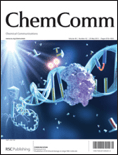
CHEMICAL COMMUNICATIONS
Scope & Guideline
Elevating the discourse in chemical research and applications.
Introduction
Aims and Scopes
- Chemical Synthesis and Catalysis:
Focuses on the development of novel synthetic methodologies, including transition metal catalysis, organocatalysis, and photocatalysis, aimed at efficient and selective transformations. - Materials Chemistry:
Explores the synthesis and application of advanced materials, including nanomaterials, metal-organic frameworks (MOFs), and polymers, with a focus on their properties and potential uses in energy storage, catalysis, and environmental applications. - Analytical Chemistry:
Covers innovative analytical methodologies and techniques, including electrochemical sensors, mass spectrometry, and spectroscopic methods, for the detection and quantification of chemical species. - Biochemistry and Chemical Biology:
Investigates the chemical basis of biological processes, including enzyme catalysis, drug design, and biomolecular interactions, often utilizing synthetic and analytical chemistry approaches. - Environmental Chemistry:
Addresses the development of sustainable chemical processes and materials aimed at reducing environmental impact, including CO2 capture and conversion, and the design of biodegradable materials. - Theoretical and Computational Chemistry:
Utilizes computational methods to understand reaction mechanisms, material properties, and molecular interactions, providing insights that guide experimental design.
Trending and Emerging
- Sustainable Chemistry:
A growing emphasis on green chemistry and sustainable practices, including CO2 utilization and biodegradable materials, indicates a shift towards addressing environmental challenges. - Photocatalysis and Solar Energy Conversion:
Increased research on photocatalytic processes and materials for solar energy conversion highlights the demand for sustainable energy solutions and efficient chemical transformations. - Nanotechnology and Nanomaterials:
There is a surge in research surrounding nanomaterials, particularly their applications in catalysis, energy storage, and environmental remediation, reflecting their critical role in modern chemistry. - Bioorthogonal Chemistry:
The development of bioorthogonal reactions and probes for biomedical applications has gained momentum, driven by the need for precise and efficient targeting in drug delivery and imaging. - Artificial Intelligence and Machine Learning in Chemistry:
The integration of AI and machine learning approaches in chemical research is rapidly increasing, enabling predictive modeling, optimization of synthesis, and analysis of complex data. - Metal-Organic Frameworks (MOFs) and Covalent Organic Frameworks (COFs):
Research on MOFs and COFs is expanding, focusing on their tunable properties and applications in gas storage, separation, and catalysis, reflecting their versatility in material science.
Declining or Waning
- Traditional Organic Synthesis:
There is a noticeable decline in conventional organic synthesis methods, as the focus has shifted towards more innovative approaches such as organocatalysis and photocatalysis. - Inorganic Chemistry:
Research in classical inorganic chemistry has waned compared to the burgeoning interest in metal-organic frameworks and coordination chemistry, which offer more interdisciplinary applications. - Classical Coordination Chemistry:
While still relevant, traditional coordination chemistry studies are being overshadowed by the more dynamic and application-oriented research involving coordination polymers and frameworks. - Low-Temperature Chemistry:
Interest in low-temperature synthesis and reactions has decreased, possibly due to the increasing focus on more practical and scalable methods that operate under ambient conditions. - Pharmaceutical Chemistry:
The specific focus on pharmaceutical chemistry appears to be declining in favor of broader applications of chemical biology and biochemistry that integrate pharmacological concepts.
Similar Journals
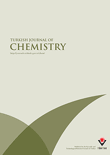
TURKISH JOURNAL OF CHEMISTRY
Bridging Theory and Application in ChemistryTURKISH JOURNAL OF CHEMISTRY, published by the Tubitak Scientific & Technological Research Council Turkey, serves as a significant platform for the dissemination of research in the diverse field of chemistry. Since its inception in 1996, this peer-reviewed journal has made substantial contributions to the body of knowledge within the field, currently holding a respectable Q3 ranking in the category of Chemistry (miscellaneous) as of 2023. Researchers and professionals alike rely on this journal for its wide-ranging discussions, innovative methodologies, and noteworthy findings pertinent to both fundamental and applied chemistry. With an ISSN of 1300-0527 and a commitment to promoting scientific progress, the journal is accessible to a global audience and encourages the open sharing of insights that drive advancements in chemistry. The extended timeframe of convergence until 2024 highlights the journal's dedication to fostering ongoing research and collaboration within the scientific community. As a valuable resource for researchers, professionals, and students, the Turkish Journal of Chemistry aims to inspire new discoveries and facilitate knowledge transfer in a dynamic and evolving discipline.
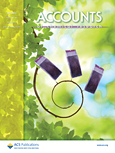
ACCOUNTS OF CHEMICAL RESEARCH
Unveiling Breakthroughs in Chemical Science and ApplicationACCOUNTS OF CHEMICAL RESEARCH, published by the American Chemical Society, is a premier journal dedicated to advancing the field of chemistry and its applications in medicine. With an impressive impact factor and recognition as a Q1 journal in both chemistry and medicine categories, it ranks among the top-tier publications, exhibiting an outstanding Scopus rank of 8 out of 408 in general chemistry, placing it in the 98th percentile. This journal has been a vital source of innovative and significant research since its inception in 1968, and it aims to provide a platform for high-quality research articles, reviews, and critical essays that bridge the gap between chemical research and clinical implications. While it is not an open-access publication, the insights available in Accounts of Chemical Research are invaluable for researchers, professionals, and students seeking to explore the latest developments and interdisciplinary approaches within the dynamic fields of chemistry and medicine.
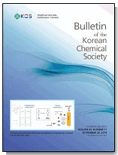
BULLETIN OF THE KOREAN CHEMICAL SOCIETY
Unveiling innovative research in the heart of chemistry.BULLETIN OF THE KOREAN CHEMICAL SOCIETY, published by WILEY-V C H VERLAG GMBH, is a prominent journal in the field of chemistry, with a specific emphasis on miscellaneous chemical research. With an ISSN of 0253-2964 and E-ISSN 1229-5949, this journal serves as a pivotal platform for researchers, professionals, and students who are eager to showcase innovative studies that address both foundational and emerging topics in the discipline. Boasting a commendable Q2 ranking in the 2023 chemistry quartiles, the journal ranks within the top 50th percentile in Scopus, reflecting its commitment to high-quality scientific discourse. The content published within its pages from 1996 to 2024 covers a vast array of subjects, ensuring a multidisciplinary approach to chemical research. The journal’s impact in the academic community is underscored by its accessibility to a global audience, making it an essential resource for those wishing to stay at the forefront of chemical advancements.
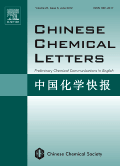
CHINESE CHEMICAL LETTERS
Pioneering Research for Tomorrow's Chemical Challenges.CHINESE CHEMICAL LETTERS, published by Elsevier Science Inc, is a premier journal in the field of chemistry, notably recognized for its focus on innovative research in multidisciplinary areas of the discipline. With its ISSN 1001-8417 and E-ISSN 1878-5964, this journal has established itself as a valuable resource for academics since its inception in 1996, with coverage extending to 2024. Categorized in the top tier (Q1) for Chemistry (miscellaneous), it ranks an impressive #37 out of 408 in Scopus's General Chemistry category, reflecting its significant influence and contribution to the field, with a remarkable 91st percentile ranking. Though it does not currently offer open access, CHINESE CHEMICAL LETTERS remains accessible to researchers through institutional subscriptions and provides crucial insights and advancements in chemical research, making it an essential publication for professionals and students aiming to stay at the forefront of chemical sciences.
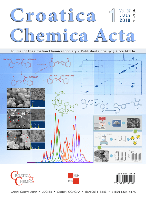
CROATICA CHEMICA ACTA
Catalyzing Scientific Exchange in ChemistryCROATICA CHEMICA ACTA, published by the Croatian Chemical Society, is a prominent open-access journal dedicated to fostering the dissemination of research in the diverse field of chemistry. With an ISSN of 0011-1643 and an E-ISSN of 1334-417X, this journal has been a vital platform for scientists since its inception, providing unrestricted access to groundbreaking findings since 1990. Located in Zagreb, Croatia, the journal covers a wide array of topics within general chemistry and strives to contribute significantly to the body of knowledge in the discipline. Although currently positioned in the Q4 quartile of the Scopus ranking within Chemistry (miscellaneous), and ranking #366 out of 408 journals, CROATICA CHEMICA ACTA plays a crucial role in promoting emerging research and innovative methodologies. As a valuable resource for researchers, professionals, and students, the journal encourages the exchange of scientific insights, with an eye towards fostering collaboration and advancing chemical sciences.
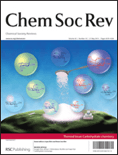
CHEMICAL SOCIETY REVIEWS
Exploring Key Advancements in Chemical MethodologiesCHEMICAL SOCIETY REVIEWS, published by the Royal Society of Chemistry, serves as an essential platform for researchers, professionals, and students in the field of chemistry. Since its inception in 1972, this prestigious journal has maintained its status as a leading publication, currently positioned in the Q1 category for Chemistry (miscellaneous) and ranking #2 out of 408 journals in the field of General Chemistry on Scopus, with an impressive 99th percentile recognition. With a focus on comprehensive reviews that synthesize key advancements and methodologies, it promotes open discussion and critical analysis crucial for driving innovation within the discipline. Although it operates under a subscription model, the journal strives to foster knowledge dissemination among the global chemistry community, ensuring accessibility to cutting-edge research and insights that shape the future of chemical sciences through its extensive array of articles.

RUSSIAN CHEMICAL REVIEWS
Transforming Chemistry Through Rigorous ReviewRUSSIAN CHEMICAL REVIEWS, published by the esteemed ND Zelinsky Institute of Organic Chemistry, RAS, stands as a prominent platform for disseminating high-quality research in the diverse field of chemistry. With an ISSN of 0036-021X and an E-ISSN of 1468-4837, this journal has earned its place in the Q1 quartile of Chemistry (miscellaneous) for 2023, reflecting its outstanding impact and rigorous peer-review process. The journal encompasses a wide array of topics within chemistry, providing critical reviews that advance understanding and foster collaboration among researchers, professionals, and students globally. With its consistent publication since 1970, RUSSIAN CHEMICAL REVIEWS not only serves as a valuable resource for the latest advancements in the field but also plays a crucial role in shaping future research directions. The journal is based in the Russian Federation, with its office located at 47 Leninsky Pr, Moscow 119991, RUSSIA. As an essential reference for those in the chemical sciences, it provides an ideal avenue for authors looking to publish impactful reviews that contribute to the broader scientific community.
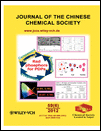
JOURNAL OF THE CHINESE CHEMICAL SOCIETY
Illuminating the Path of Chemical InnovationJOURNAL OF THE CHINESE CHEMICAL SOCIETY, published by WILEY-V C H VERLAG GMBH, is a vital resource in the field of chemistry, focusing on a broad array of topics pertinent to general chemistry and its advancing sub-disciplines. Established in 1954 and running through 2024, this journal serves as a significant platform for the dissemination of high-quality research, showcasing innovative findings and developments within the chemical sciences. With its Q3 category ranking and positioning at Rank #203 in General Chemistry per Scopus, it reflects the journal's commitment to research excellence and impact. While not an open-access publication, it ensures accessibility to a global audience, making it an essential tool for researchers, professionals, and students alike seeking to stay informed and engaged in the evolving landscape of chemistry.
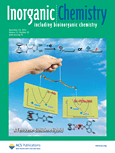
INORGANIC CHEMISTRY
Pioneering Discoveries in Inorganic and Physical ChemistryInorganic Chemistry, published by the American Chemical Society, stands at the forefront of the field of inorganic and physical chemistry, boasting an impressive impact in the academic community with a 2023 classification in the Q1 quartile across multiple categories including Inorganic Chemistry and Miscellaneous Chemistry. Since its inception in 1962, this esteemed journal has been a crucial platform for disseminating groundbreaking research, innovative methodologies, and comprehensive reviews integral to understanding the complex behaviors of inorganic materials. With a ranking of #12 out of 79 in Inorganic Chemistry and #37 out of 189 in Physical and Theoretical Chemistry according to Scopus metrics, Inorganic Chemistry has established itself as a premier destination for researchers, professionals, and students alike, eager to stay abreast of pivotal developments and trends in the discipline. Despite being a subscription-based journal, its esteemed reputation and critical contributions make it essential for anyone engaged in the exploration of inorganic chemical phenomena. As it prepares to converge into a new era by 2024, the journal continues to embody excellence and innovation, fostering a dynamic exchange of ideas essential for advancing this vibrant area of science.
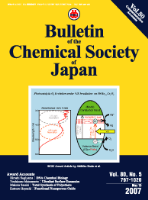
BULLETIN OF THE CHEMICAL SOCIETY OF JAPAN
Showcasing Excellence: A Nexus for Chemical ScholarshipBULLETIN OF THE CHEMICAL SOCIETY OF JAPAN, published by the esteemed Chemical Society of Japan, serves as a pivotal platform for the dissemination of cutting-edge research in the multifaceted field of chemistry. With an ISSN of 0009-2673 and an E-ISSN of 1348-0634, this journal has been integral in fostering the growth of chemical sciences globally since its inception in 1965. The journal holds an impressive Q2 ranking in the Chemistry (miscellaneous) category, indicating its relevance and influence within the academic community, as reflected by its Scopus rank of #104/408, placing it in the 74th percentile. Although it is not an open-access journal, its rich content, which spans a wide range of topics in general chemistry, remains highly valued by researchers, professionals, and students alike, affirming its crucial role in advancing both theoretical knowledge and practical applications in chemistry. As it converges towards 2024, the bulletin continues to uphold its commitment to excellence in scientific communication and research dissemination in Japan and beyond.